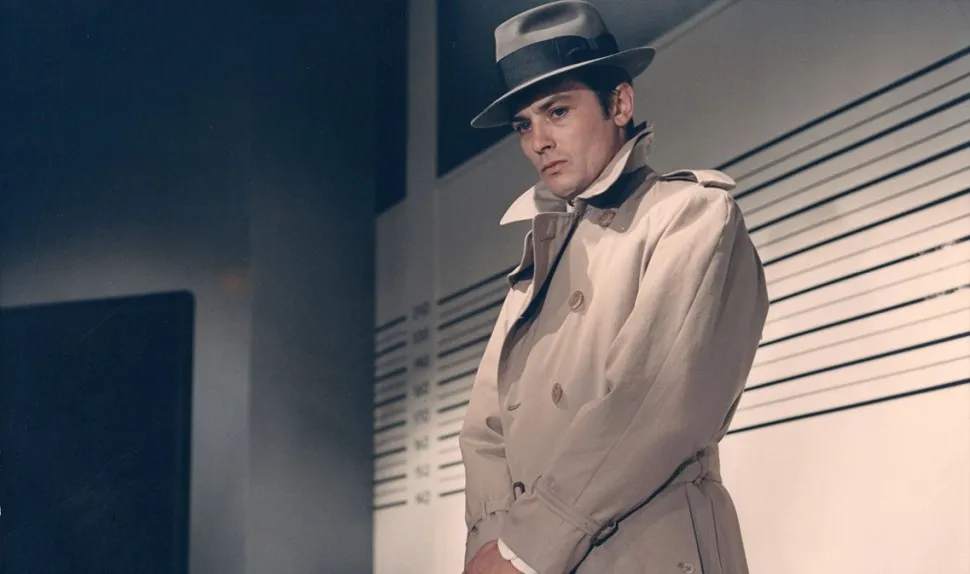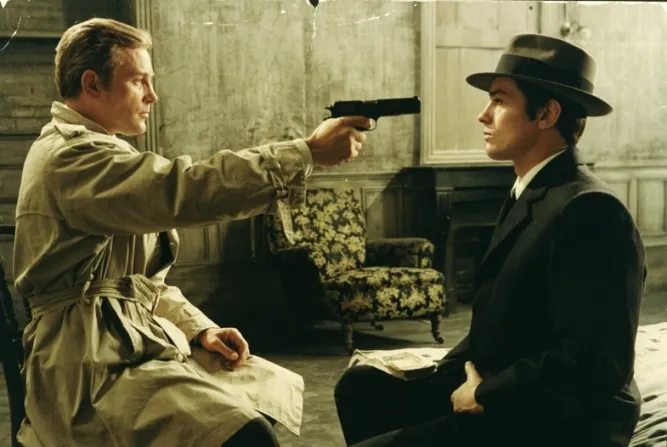
Let’s ask one of the most subjective questions ever, what is the most attractive attire for men? I can’t decide that for all the men (and certainly not for the women) but I have felt an immense love for fedora hats and trench coats all my life and since as a boy. Nowadays these are quite light, short and mostly a fashion choice of sort and yes, an outdated one too. Men no longer wear these long coats. Sigh.
My fascinations for these perhaps rose from my favorite childhood comic book series The Phantom. In the jungle he wore his costume and when in civilization, he always wore a trench coat and a fedora. So mysterious and cool!
Also there’s the myriads of gangster/mafia films I’ve gobbled growing up. And Le Samourai is perhaps the epitome of trench coat featuring films that checks all the things I want in a film.
Albeit, what caught my attention at first are not the coat nor the hat. It’s the unevenly lit semi-dark damp room, the lone cheap bed in the middle and the man half-leaned on that, smoking a cig, his face cannot be seen. The windows at one side secretly lets some of the sky in. A hissing sound is always present. What is that? The sea? Perhaps not. Too fast and there’s no rhythm to it. A quick splash on the glass of the window let us know it’s the rain. This long shot lasts for a couple of minutes. Enough to establish the overall atmosphere of the film.
The unknown man then slides himself in a trenchcoat and hits the roads. As the film advances, we know he’s a freelancer hitman called Jef Costello. With cautious methods he carries out his missions and kills the targets. He has a huge keychain full of random keys. With a world of patience, he tries the locks with keys, one after another, until one works.
Jef is a hard boiled, remorseless, passionless, calculative murderer. He’s cold, colder than a corpse dead in a remote jungle-- in his characteristics and behaviour. Doesn’t talk much, moves by the hand of a clock.

While Alain Delon is a great actor, he alone couldn’t create that character- deliberate use of light and shadow played a big part. In most scenes, there’s only one light source and it’s there as natural light. Nothing artificial is incorporated. Hitman Jef’s one side is lit, the other is dark, making him all the more alluring. The story and theme is there to support it.
Like a daily chore, Jef finishes his contract that day as well. But when the client questions his method, complications rise. Paris police ain’t sitting idly as well. The lead detective suspects Jef but there’s no proof. He’s dwarfed by Jef’s mastery of professional illusiveness. But he’s not the one to call it a day just yet. All over the city, a cat-mouse chase game commences.

There’s not many dialogues in the film. And what little of it is there, most of them are in the police station, when the cops round up possible suspects to interrogate them.
The auteur/filmmaker Jean-Pierre Melville mostly used visual storytelling to further the plot. I can cite one scene where Jef goes to a garage with his car to replace his license plate. The car enters the garage. The owner of the garage immediately starts to change the plate. No exchanges of words the entire time. As if everything is already negotiated. This scene is there to indicate Jef’s competence as a thorough hitman who has set up his empire pretty neatly.
Le Samourai is a perfect crime thriller. The greatest hitman-themed film for me as well. It also bears the marks of Melville’s masterful visual artistry. A film, an art to experience and cherish.

About Me


Twitter - https://twitter.com/not_a_c1nephile
Youtube - https://www.youtube.com/channel/UCg3TwYk--HKIsRmnvhob1Mg
